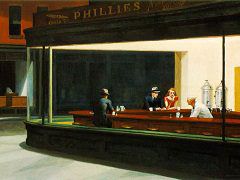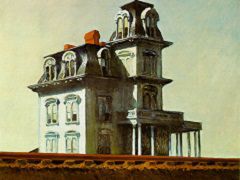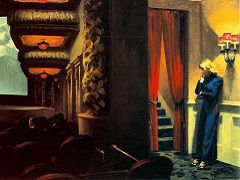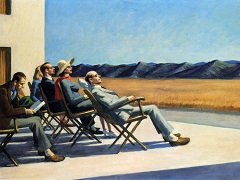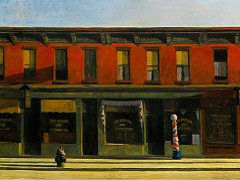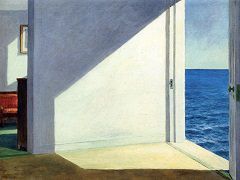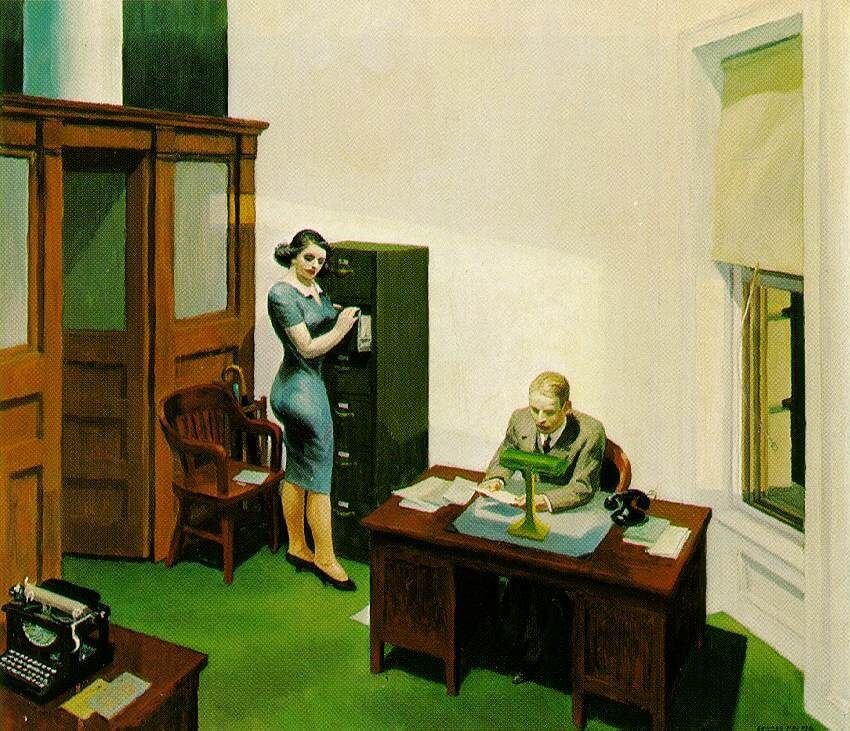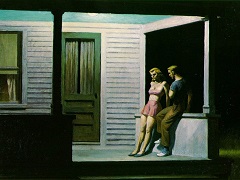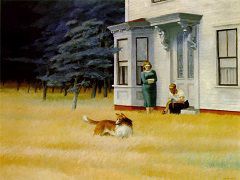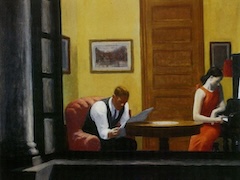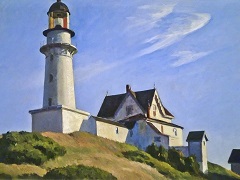Chop Suey, 1929 by Edward Hopper
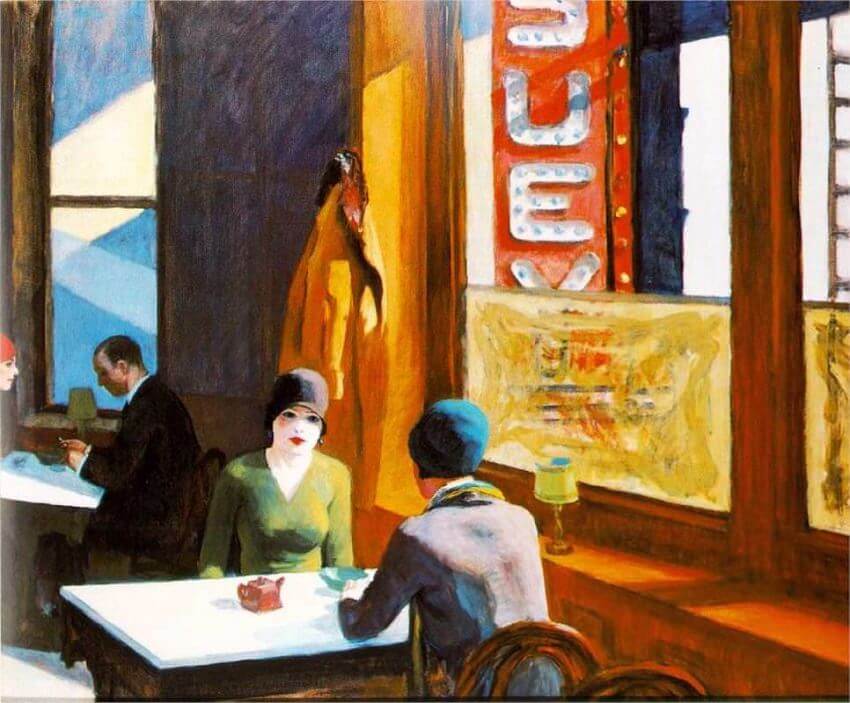
Edward Hopper, perhaps more than any other artist, has captured the sense of loneliness and isolation that can only be experienced in the midst of a crowd in the modern city. His paintings, carefully constructed and composed to give the impression of a momentary glance - a voyeuristic gaze into the private space and emotions of an anonymous stranger - constitute a unique record of the changing society of modern America. Chop Suey focuses upon two women seated at a restaurant table. Despite this company, however, each woman seems alone, lost in her own thoughts in a world of silence, while the couple in the background seem similarly uncommunicative. The high angle of view and the cropping of both the 'Chop Suey' sign, seem through the window, and the female customer on the left, all add a sense of strangeness and alienation to the scene. Yet, for all its specifically American detail, Hopper's work was highly influenced by nineteenth-century French painting. Here, Hopper explicitly refers to the cafe scenes of both Van Gogh and Manet, while simultaneously updating and relocating them in modern America.
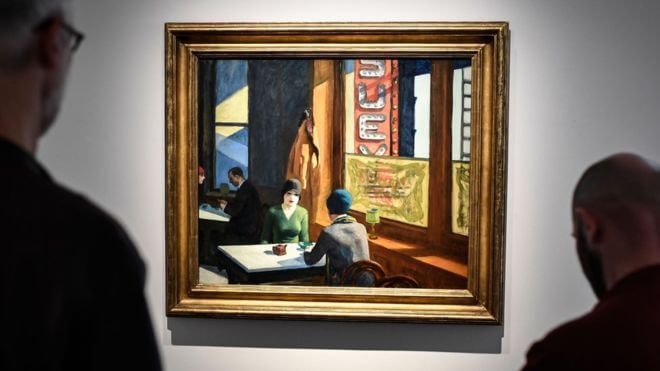
According to some art scholars, one "striking detail of Chop Suey is that its female subject faces her doppelganger." Others have pointed out it would not be so unusual for two women to be wearing similar hats, and that it is
presumptuous to claim doppelgangers when one of subject's face is not visible to the viewer. The painting has an interior subject matter, being inside of a cafe and not specifying on any one given figure. As with many of
Hopper's works, the painting features a close attention to the effects of light on his subjects.
A similar painting, Composition I was completed by Mark Rothko in 1931.

